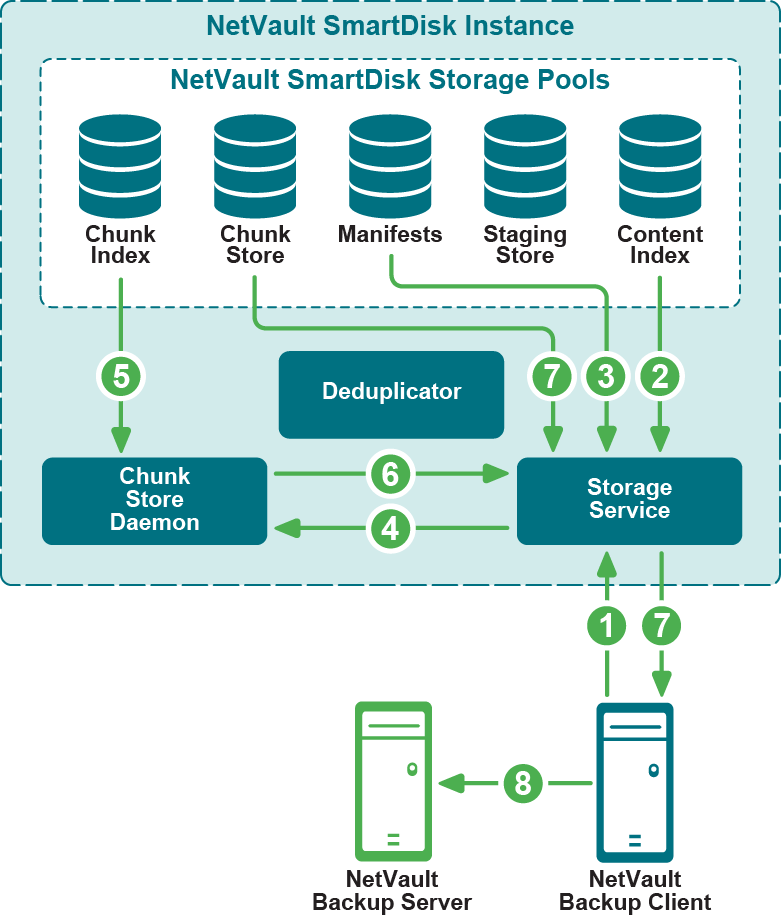Deduplicated restore process
|
1 |
After the user initiates a restore of a deduplicated NetVault Backup backup that is targeted to a NetVault SmartDisk Instance, the NetVault Backup Client requests the data on the user-defined port from the Storage Service. |
|
2 |
The Storage Service queries the Content Index to determine whether the backup is stored in the Staging Store for nondeduplicated backups or the Chunk Store for deduplicated backups. |
|
3 |
The Storage Service queries the backup’s Manifest for the first or next batch of Chunk Names in the backup. |
|
4 |
The Storage Service queries the Chunk Store Daemon for the location of the Chunks in the Chunk Store. |
|
5 |
Using Chunk Names from the Manifest, the Chunk Store Daemon queries the Chunk Index for pointers to the Chunks in the Chunk Store. |
|
6 |
The Chunk Store Daemon provides the Storage Service with the location of the Chunks in the Chunk Store. |
|
7 |
The Storage Service retrieves the Chunks from the Chunk Store and streams the Chunk to the NetVault Backup Client. |
|
8 |
On completion of restoring all Chunk Names in Manifest, the NetVault Backup Client updates the NetVault Backup Server with a Restore Completed job status. |
Garbage Collection process
When backups targeted to NetVault SmartDisk are retired, the data is removed from the backup database; however, the unique Chunks are not automatically removed from the Chunk Store. The NetVault SmartDisk Garbage Collection process is designed to remove orphaned Chunks from the Chunk Store and reclaim disk space. To do so, Garbage Collection maintains reference counts of added and deleted Chunks, and it deletes or rewrites partially used Chunk pages.
Planning your NetVault SmartDisk deployment
Deployment strategy: an overview
Before calculating the required NetVault SmartDisk Capacity, ensure that the backups being targeted to NetVault SmartDisk are compatible with NetVault SmartDisk. For more information, see the Quest NetVault Backup Compatibility Guide.

